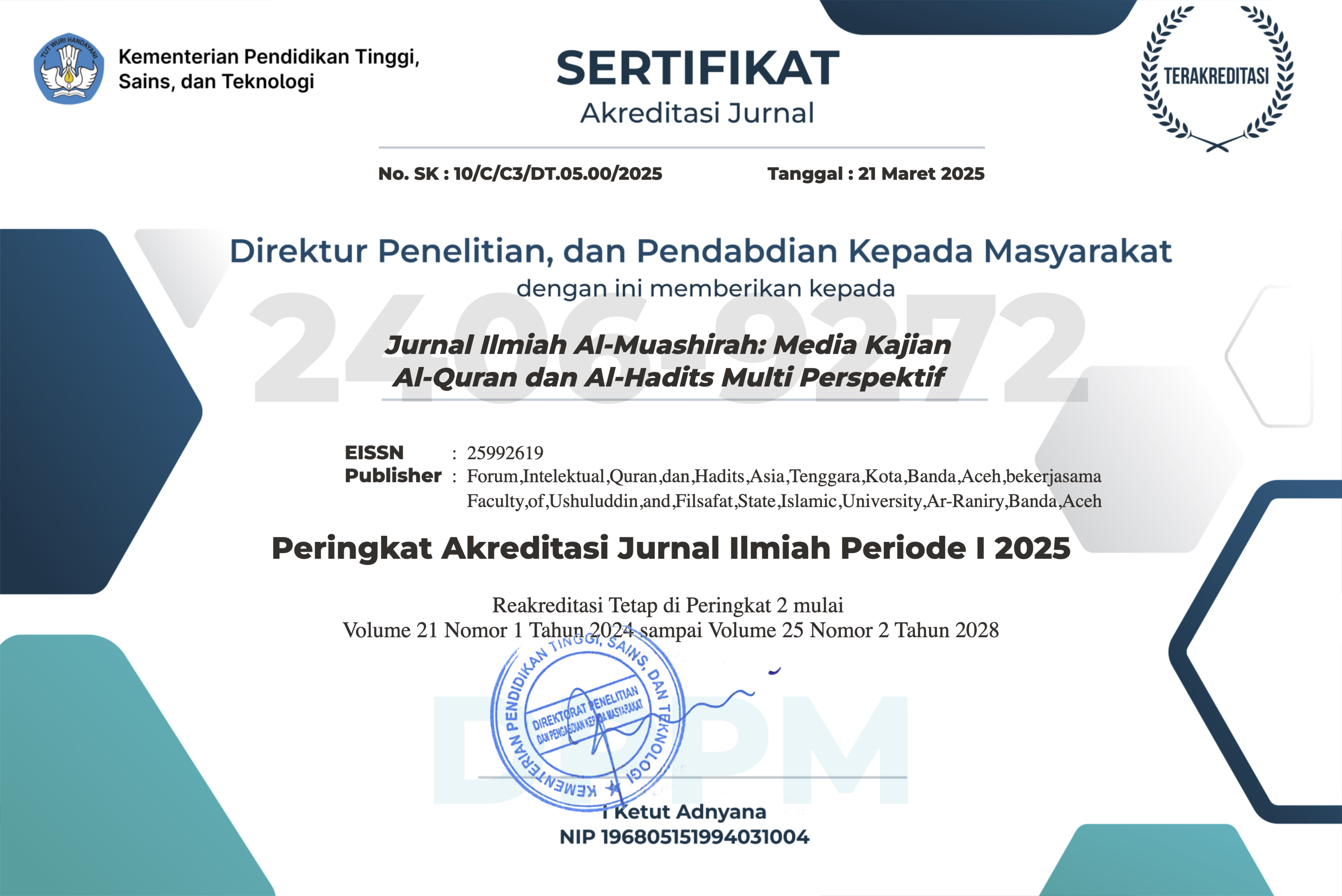TATACARA PELAKSANAAN SHALAT BERJAMA’AH BERDASARKAN HADIS NABI
DOI:
https://doi.org/10.22373/jim.v15i2.5294Keywords:
Pelaksanaan, shalat berjama’ahAbstract
This "Procedure for Prayer of Prayer" was brought about by the fact that there were various phenomena and irregularities of the members of the prayer and some of the members who preceded their prayer movements instead of the priestly prayer movement, while all of them were in the position of following the priest as they were performing prayer in the congregation. Another phenomenon that can be seen is the range of movement of the prayer from one pillar to prayer to the next. For example, some raise both hands before saying takbiratulihram, others raise both hands in conjunction with the takbiratul ihram pronunciation and some raise both hands after the pronunciation of takbiratul ihram. With the emergence of a variety of prayer-worship practices like this if all congregations were able to understand it as al-Tanawwu 'fi al-'Ibadah there would be a sense of mutual tolerance among the congregation. However, if they are narrow-minded they will cause a breakdown in Islamic fellowship because they claim that they are right and accuse the other of being wrong, and some even consider the other person to be the culprit, misguided and misleading. To correct misunderstandings in some societies, the writing of the article: "Procedures for Prayer Prayers", based on the Sunnah of the Messenger of Allah and the explanations of the scholars / fuqaha 'is very important to be created and published to the public. It is hoped that this simple piece of writing will serve as a guide for readers in performing the prayer of the congregation.Downloads
References
Abu Hamid Al-Ghaazali, Al-Wajiz fi Fiqh Al-Imam Asy-Syafi’i, Libanon: Dar Al- Ma’rifah, tt. Al-Kahlani Ash-Shan’ani Al-Yamani, Al-Imam Muhammad bin Isma’il, Subulussalam, Juz I, Bandung: Dahlan, tt. Al-Qalyubi, Syihabuddin Ahmadbin Ahmad bin Salamah dan ‘Umairah, Syihabuddin Ahmad al-Balesti, Hasyiyatani Qulyubi-‘Umairah, Juz I, Singapura-Jeddah-Indonesia: Al-Haramai, tt. An-Nawawi, Al-Imam Abi Zakaria Mahyiddin, Kitab Al-Majmu’ Syarh Al- MuhadzdzabLisy-Syirazi, Juz I, II, III, Jeddah: Maktabah Al-Irsyad, tt. Asy-Syawkani, Muhammad bin ‘Ali Ibnu Muhammad, Nail Al-Awthar, Juz I, Kairo: Dar Al-Fath, tt.
Ibnu Hajar Al-Makki Al-Haitami, Al-Imam Syahabuddin Ahmad bin Muhammad bin Muhammad bin ‘Ali, Al-Fatawa Al-Kubra Al-Fiqhiyah, Juz I, Beirut-Libanon: Dar Al-Kutub Al-‘Ilmiyah, 1997 M/1417 H.
Sayid Sabiq, Fiqhussunnah, Juz I, Kairo: Dar al-Fath, tt. Sayid Bakri Syatha, Kitab I’anah Ath-Thalibin, Juz I, Beirut: Dar Al-Kutub Al- ‘Ilmiyah, 1995 M/1415H. Sulaiman bin Muhammad bin ‘Umar, Al-‘Allamah Al-Syaikh, HasyiyahAl- Bujairami ‘Ala Syarh Minhaj Ath-Thullab, Juz I, Beirut-Libanon: Dar Al-Kutub Al-‘Ilmiyah, 2000 M/1420 H.
Wahbah Az-Zuhaili, Al-Fiqh Al-Islamy wa Adillatuh, Juz I, Damsyiq: Dar Al- Fikr, 1997 M/1418 H.
Downloads
Published
Issue
Section
License
Authors who publish in Jurnal Ilmiah Al-Mu'ashirah agree to the following terms:
- Authors retain copyright and grant the journal right of first publication with the work simultaneously licensed under a Attribution-ShareAlike 4.0 International (CC BY-SA 4.0) License that allows others to share the work with an acknowledgment of the work's authorship and initial publication in this journal.
- Authors are able to enter into separate, additional contractual arrangements for the non-exclusive distribution of the journal's published version of the work (e.g., post it to an institutional repository or publish it in a book), with an acknowledgment of its initial publication in this journal.
- Authors are permitted and encouraged to post their work online (e.g., in institutional repositories or on their website) prior to and during the submission process, as it can lead to productive exchanges, as well as earlier and greater citation of published work (See The Effect of Open Access).













